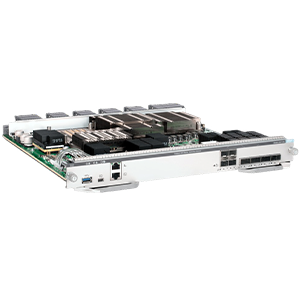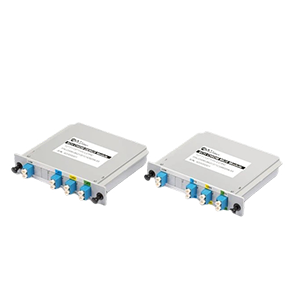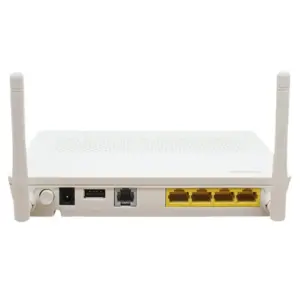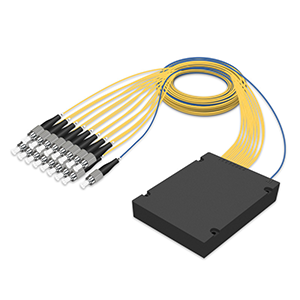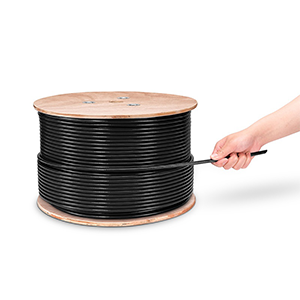Optical fiber undoubtedly plays a key role in modern communication networks. This article will focus on the application areas of single-mode optical fiber. We will first outline the basic definitions of multimode optical fiber and single-mode optical fiber, and compare the differences between the two optical fibers in terms of transmission bandwidth, distance, etc. Next, we will explain the advantages of single-mode optical fiber in terms of transmission distance and bandwidth, and analyze its key advantages over multimode optical fiber.
We will list the typical application scenarios of single-mode optical fiber, including long-distance backbone network transmission, data center and enterprise LAN, radio base station backhaul, fiber to the home (FTTH), and industrial control and medical equipment. In addition, we will explain the technical factors that need to be considered when deploying single-mode optical fiber, and introduce the precautions for selecting single-mode optical fiber equipment and components.
Optical fiber types and their characteristics
Let me summarize the basic definitions of multimode optical fiber and single-mode optical fiber for you, and compare their differences in terms of transmission bandwidth and transmission distance.
Basic definitions of multimode fiber and single-mode fiber:
Multimode fiber (MMF):
- Allows multiple light modes to propagate in the fiber, that is, multiple independent light propagation paths.
- The core diameter is relatively large, usually 50 microns or 62.5 microns, and can be coupled to a larger emission source.
- Mainly used for medium and short distance transmission, such as local area network, fiber to the home (FTTH) and other applications.
Singlemode fiber (SMF):
- Only allows a single basic light mode to propagate in the fiber.
- The core diameter is relatively small, usually 8-10 microns, and can only be coupled to a small-sized emission source.
- Mainly used for long-distance transmission, such as trunk transmission, long-distance communication and other applications.
In general, there are obvious differences between multimode fiber and single-mode fiber in terms of light propagation mechanism and structural parameters, which determine their different characteristics and applicable scenarios in practical applications.
Differences between the two types of optical fibers in terms of transmission bandwidth and distance:
(1) Transmission bandwidth
- Since multimode fiber allows multiple light modes to propagate, its bandwidth is relatively narrow, usually 1-10Gbps.
- Single-mode fiber has only a single mode of propagation, and its theoretical bandwidth can reach hundreds of Gbps or even Tbps.
(2) Transmission distance
- Multimode fiber is suitable for medium and short distance transmission, with a typical transmission distance of 2-5 kilometers.
- Single-mode fiber is suitable for long distance transmission, which can reach tens to hundreds of kilometers.
(3) Dispersion characteristics
- Multimode optical fiber is greatly affected by inter-mode dispersion, which limits its high-speed transmission performance.
- Single-mode optical fiber is only affected by wavelength dispersion and can achieve a higher bandwidth-distance product.
In general, single-mode optical fiber has the advantages of wider bandwidth and longer transmission distance because it only allows single-mode propagation, but its coupling efficiency is lower and requires a more precise emission source. Although multimode optical fiber has limited bandwidth and distance, it has a simple structure and low cost, and is more advantageous in medium and short-distance applications. Different application scenarios require the selection of appropriate optical fiber types according to specific requirements.
Technical advantages of single-mode optical fiber
Let me explain in detail the advantages of single-mode optical fiber in terms of transmission distance and bandwidth, as well as other key advantages compared to multimode optical fiber.
Advantages of single-mode fiber in transmission distance and bandwidth:
(1) Transmission distance advantage
- Single-mode fiber only allows one fundamental mode to propagate and is not affected by inter-modal dispersion.
- This makes it possible to achieve long-distance transmission of tens to hundreds of kilometers, far exceeding multi-mode fiber.
(2) Bandwidth advantage
- Theoretically, the bandwidth of single-mode fiber can reach hundreds of Gbps or even Tbps.
- This is mainly due to the fact that there is almost no limitation on bandwidth due to inter-modal dispersion under single-mode propagation.
(3) Bandwidth-distance product advantage
- The bandwidth-distance product of single-mode fiber is many orders of magnitude higher than that of multi-mode fiber.
- This makes single-mode fiber have obvious advantages in high-speed, high-capacity, long-distance transmission.
In general, single-mode fiber can achieve very high transmission bandwidth while ensuring long-distance transmission due to its excellent low dispersion characteristics, which is unattainable for multi-mode fiber. This bandwidth-distance product advantage makes single-mode fiber widely used in trunk communications, long-distance data transmission and other fields.
Other key advantages of single-mode fiber over multi-mode fiber:
(1) Signal integrity advantage
- Single-mode fiber only allows single-mode propagation and does not produce inter-modal dispersion.
- This is beneficial to the fidelity and reliability of the transmitted signal.
(2) Coupling efficiency advantage
- Single-mode fiber has a smaller core diameter and is easier to achieve efficient coupling with a small-sized emission source.
- Multimode fiber requires a larger source size, and the coupling process is more complicated.
(3) Anti-interference advantage
- The small size of single-mode fiber makes it more resistant to electromagnetic interference and microbending.
- This anti-interference ability is very advantageous in some harsh industrial environments.
(4) Cost advantage
- With the advancement of optical communication technology, the cost of single-mode fiber components continues to decline.
- Compared with multimode fiber, single-mode fiber may have a lower overall cost in some application scenarios.
In summary, single-mode fiber has shown obvious advantages in high-speed, long-distance, high-quality optical communication applications due to its excellent transmission distance, bandwidth, signal integrity, coupling efficiency and anti-interference. This makes it the preferred fiber type in trunk communication, long-distance data transmission and other fields.
Typical application scenarios of single-mode fiber
Let me summarize the typical application scenarios of single-mode fiber for you:
Long-distance backbone network transmission
- Single-mode fiber is widely used in backbone networks and trunk transmission due to its excellent transmission distance and bandwidth characteristics.
- It can support high-speed data transmission, remote video monitoring, large-capacity telephone and other services.
- The transmission distance can reach hundreds of kilometers, meeting the long-distance communication needs across regions, provinces and even countries.
Data center and enterprise LAN
- The high bandwidth and reliability of single-mode fiber make it play an important role in data centers and enterprise campus networks.
- It realizes high-speed optical interconnection between servers, storage devices, switches, etc., and supports business-critical applications.
- It can cope with the growing demand for data transmission and meet the stringent requirements of enterprises for network performance.
Radio base station backhaul
- Single-mode fiber provides a reliable high-speed transmission channel between the communication base station and the backbone network.
- Supports wireless base station backhaul for large-capacity voice, video and data services to ensure network quality.
- Compared with traditional microwave transmission, single-mode fiber has higher reliability and anti-interference ability.
Fiber to the Home (FTTH)
- Single-mode fiber can extend from the central node to the user’s home, realizing “fiber to the home”.
- Provides downlink bandwidth of up to 1Gbps or higher to meet the needs of home users for high-speed broadband.
- In addition, single-mode fiber can also realize functions such as remote power supply in FTTH.
Industrial control and medical equipment
- Single-mode fiber’s anti-interference ability and reliability make it used in industrial automation, medical equipment and other fields.
- Provide high-speed and stable communication links connecting production line equipment, sensors, control systems, etc.
- In harsh industrial environments, single-mode fiber shows obvious advantages.
In short, single-mode fiber has been widely used in long-distance backbone networks, data centers, base station backhaul, FTTH and industrial control with its excellent transmission performance, meeting today’s high-speed and large-capacity communication needs.
Precautions for single-mode fiber application
Let me introduce you to some technical factors and precautions for selecting equipment components when deploying single-mode fiber applications.
Technical factors to consider when deploying single-mode fiber applications:
(1) Fiber type compatibility
- Ensure that the selected single-mode fiber type (such as G.652, G.655, etc.) is compatible with the device port.
- Different types of single-mode fibers differ in terms of dispersion characteristics, operating wavelengths, etc.
(2) Fiber splicing loss
- Fiber connectors, splices, fiber jumpers and other splicing points will all produce a certain amount of optical power loss.
- Appropriate measures need to be taken, such as using low-loss connectors and optimizing splicing processes, to reduce overall losses.
(3) Wavelength dispersion management
- In long-distance transmission, wavelength dispersion may cause signal distortion, which requires effective compensation.
- Dispersion compensation fiber or dispersion compensation module can be used to suppress the influence of dispersion.
(4) Optical power budget
- The total optical power loss of the entire link must be controlled within the sensitivity range of the receiving end.
- It is necessary to fully consider various loss factors and leave appropriate power margin.
(5) Optical fiber wiring management
- Reasonably plan the optical fiber laying path to avoid macro bending loss caused by excessive bending and twisting.
- Use appropriate auxiliary facilities such as optical fiber pipelines and conduits to ensure reasonable and safe optical fiber layout.
Precautions for selecting single-mode fiber equipment and components:
(1) Selection of light source and detector
- Ensure that the transmitting light source and receiving detector match the optical fiber operating wavelength.
- The light source power and detector sensitivity must meet the energy budget of the transmission link.
(2) Selection of connectors and jumpers
- Preferably use standard single-mode fiber connectors such as LC, FC, and SC to ensure reliable docking.
- Select fiber jumpers with reliable quality to reduce splicing losses.
(3) Fiber fusion splicing equipment
- Use professional fiber fusion splicers to achieve low-loss, high-strength fiber splicing.
- Regularly maintain and calibrate the fusion splicing equipment to ensure splicing quality.
(4) Monitoring and testing tools
- Equipped with professional testing tools such as optical power meter and optical time domain reflectometer.
- Regularly check link performance to find and solve problems in a timely manner.
(5) Environmental adaptability
- Select equipment that meets the requirements of the working environment, such as waterproof, shockproof, and corrosion-resistant.
- Ensure that the optical fiber wiring pipeline can withstand the influence of harsh environmental factors.
In short, when selecting single-mode optical fiber related equipment and components, it is necessary to focus on its technical indicators, quality reliability, and environmental adaptability to ensure the long-term stable operation of the optical fiber transmission link.
Summary
Reasonable deployment of single-mode optical fiber can effectively support the high-performance transmission requirements of modern communication networks. Our company has long been focusing on the research and development and production of optical communication equipment and its supporting products, and has rich industry experience. Our single-mode optical fiber products have reached the industry-leading level in terms of transmission distance, bandwidth, etc., and can meet your demanding needs for high-speed and reliable network construction.
Whether you need to deploy single-mode optical fiber in the backbone network of telecom operators, data centers, or industrial automation scenarios, we can provide you with customized solutions. At the same time, our professional team will provide you with a full range of technical support, including on-site surveys, solution design, and equipment installation and maintenance. Contact us now to learn more about the application of single-mode optical fiber.
Single Mode Fiber FAQ
Single mode optical fiber has a very small core diameter (8-10 microns) that allows only one propagation mode of light to travel through the fiber.
Single mode fiber is primarily used for long-distance telecommunications and internet backbone networks, as well as some high-speed enterprise fiber optic networks.
Key advantages include higher bandwidth, lower signal attenuation, and longer transmission distances compared to multimode fiber.
Major use cases include long-haul internet and telecom backbones, metropolitan area networks, and fiber-to-the-home (FTTH) broadband networks.
The small core size and single light mode of single mode fiber results in less signal loss and dispersion over long fiber runs.
Yes, single mode fiber is critical for internet service providers, telecommunications companies, and some enterprise network operators.
Single mode fiber can reliably transmit data over distances of 10-100 km without the need for repeaters or amplifiers.
While less common, single mode fiber is sometimes used in high-speed LAN backbones and campus network infrastructures.
The main limitations are the higher cost and the need for more precise splicing and termination compared to multimode fiber.
With the ongoing growth in bandwidth demands, single mode fiber is expected to remain a critical technology for core networks and long-distance connectivity.

